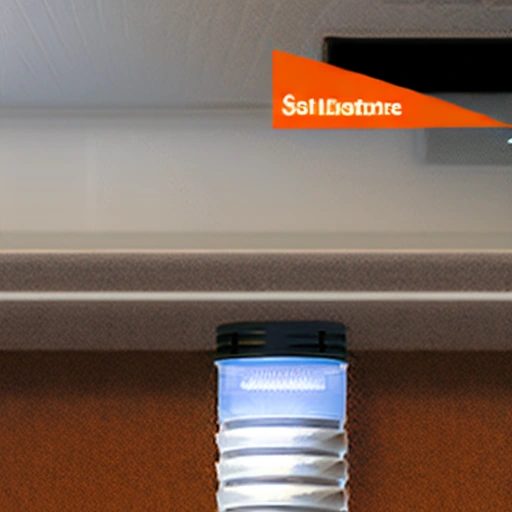DIY Gravity-Fed Bathroom Drainage: A Step-by-Step Installation Guide
Introduction: The Allure of Gravity-Fed Drainage
The rhythmic gurgle of a well-functioning drain is a subtle symphony of homeownership, often taken for granted until it’s replaced by the dreaded sound of a slow drain or, worse, a complete blockage. While modern plumbing relies heavily on pressure and complex systems, the elegant simplicity of gravity-fed drainage offers a viable, and sometimes superior, alternative, especially in residential bathrooms. Imagine a self-draining shower that efficiently whisks away water without the need for noisy pumps or the risk of power outages disrupting your daily routine.
This guide explores the principles and practicalities of designing and installing your own gravity bathroom drainage system, offering a step-by-step approach to a more reliable and sustainable plumbing solution. A well-executed DIY plumbing drainage project not only saves money but also provides a deeper understanding of your home’s infrastructure. Gravity bathroom drainage, or a passive drainage system, leverages the natural force of gravity to move wastewater away from fixtures. Unlike pumped systems, which require electricity and are prone to mechanical failure, a properly designed gravity-fed system operates silently and reliably.
This makes it an attractive option for homeowners seeking a low-maintenance and energy-efficient bathroom plumbing solution. The key is understanding and adhering to plumbing codes regarding slope and pipe sizing to ensure optimal performance. This approach minimizes the risk of clogs and backups, offering long-term peace of mind. Before diving into drainage installation, it’s crucial to acknowledge the evolving landscape of bathroom design and its intersection with privacy concerns. Recent debates surrounding the installation of CCTV cameras in school bathrooms, as reported by various news outlets, highlight the need for careful consideration of both functionality and ethical implications when modifying any bathroom space.
Similarly, the deployment of vaping detectors in school bathrooms, as seen in Michigan’s Dearborn schools, underscores the ongoing efforts to balance safety and privacy within these shared environments. These developments serve as a reminder that any alteration to a bathroom, including plumbing modifications, should be approached with sensitivity and a commitment to upholding user privacy. Furthermore, consider the environmental impact of your choices, opting for sustainable materials and practices whenever possible. Proper drainage maintenance is also vital for preserving system longevity.
Planning and Design Considerations: Slope, Size, and Placement
Successful gravity-fed drainage hinges on meticulous planning. The most critical factor is slope. Building codes typically mandate a minimum slope of 1/4 inch per foot for drain lines. This ensures that gravity can effectively pull wastewater through the pipes. Accurately calculating the required slope is paramount; too little slope leads to sluggish drainage and potential blockages, while excessive slope can cause water to separate from solids, leading to clogs further down the line. Pipe sizing is another key consideration.
Standard bathroom fixtures typically connect to 1 1/2-inch drain lines, but the main drain line should be at least 2 inches in diameter, or larger depending on the number of fixtures connected to it. Consult local plumbing codes for specific requirements. Fixture placement also impacts drainage efficiency. Grouping fixtures close together minimizes the length of drain lines and reduces the risk of blockages. Consider the overall layout of your bathroom and how each fixture will connect to the main drain line.
A well-planned layout minimizes sharp bends and long horizontal runs, both of which can impede drainage. Remember to obtain the necessary permits before commencing any plumbing work. Ignoring local building codes can result in costly fines and require you to redo the entire installation. Beyond the fundamental slope and pipe diameter, understanding the nuances of vent placement is crucial for optimal gravity bathroom drainage. Vents allow air to enter the drainage system, preventing vacuums that can impede flow.
Each fixture requires proper venting, often achieved through a network of pipes leading to a main vent stack that exits through the roof. Improper venting can manifest as gurgling sounds in the drain, slow drainage, or even the siphoning of water from toilet bowls. For DIY plumbing drainage projects, understanding local codes regarding venting is just as important as understanding slope requirements. Consider using air admittance valves (AAVs) as a code-compliant alternative in situations where traditional venting is challenging, but always verify their permissibility with local inspectors.
When considering a self-draining shower or implementing a passive drainage system in your bathroom, think holistically about water usage and potential flow rates. A high-flow showerhead, for example, will demand a larger drain line and a more carefully calculated slope to prevent water from pooling. Evaluate the simultaneous usage of multiple fixtures; if two showers and a sink are frequently used at the same time, the main drain line must be adequately sized to handle the combined flow.
Furthermore, the material of the pipes themselves can influence drainage efficiency over time. While PVC is a common and cost-effective choice, cast iron offers superior sound dampening and durability, particularly in older homes. Choosing the right materials impacts long-term drainage maintenance and overall system performance. Addressing the specifics of drainage installation, pay close attention to the connection points between different pipe sections and fixtures. Use appropriate fittings and ensure they are properly secured with primer and cement, following the manufacturer’s instructions meticulously.
A poorly cemented joint is a prime location for leaks, which can lead to water damage and costly repairs. Before enclosing any plumbing within walls or floors, conduct a thorough water test to check for leaks. This involves running water through all fixtures simultaneously and carefully inspecting all connections for any signs of seepage. Taking the time to perform this test can save significant headaches and expenses down the line, ensuring a reliable and long-lasting gravity bathroom drainage system.
Materials and Tools: Setting Up for Success
Before you begin tackling your gravity bathroom drainage project, meticulous preparation with the right materials and tools is crucial for success. You’ll need PVC or ABS pipes – remember to check local plumbing codes for approved materials in your area, as this can vary significantly. For instance, some municipalities require specific pipe thicknesses or have restrictions on ABS usage due to environmental concerns. Gather an assortment of fittings, including elbows for changing direction, tees for joining pipes, and couplings for connecting sections.
Don’t forget PVC or ABS cement and primer, essential for creating airtight, watertight seals. Accuracy is key, so a reliable measuring tape and a level are indispensable. A pipe cutter or saw will be needed to precisely cut the pipes to the required lengths, and a drill with various bits might be necessary for securing pipes or creating access points. Safety glasses and gloves are non-negotiable for personal protection, along with a pencil for marking measurements.
A pipe wrench and adjustable wrench will also be useful for tightening connections, ensuring a secure and leak-free system. These tools form the foundation for any successful DIY plumbing drainage endeavor. Consider renting or borrowing specialized tools like a pipe bender or a pipe threader if your project involves complex angles or connections. Pipe benders allow you to create smooth, gradual curves in your pipes, which can improve flow and reduce the risk of blockages in your self-draining shower system.
Pipe threaders are necessary if you need to create threaded connections, often required when connecting to existing plumbing infrastructure. For larger diameter pipes, a chain wrench might provide better grip and leverage. Investing in or borrowing these specialized tools can save you time and frustration, and ultimately lead to a more professional and reliable installation of your passive drainage system. Remember to familiarize yourself with the proper use of each tool before beginning your project to avoid accidents or damage to the materials.
Safety is paramount when undertaking any DIY plumbing project. Always wear safety glasses and gloves when working with plumbing materials to protect yourself from debris, chemicals, and sharp edges. Ensure the work area is well-ventilated, especially when using PVC or ABS cement, as the fumes can be harmful and can cause dizziness or respiratory irritation. Turn off the water supply to the bathroom before disconnecting any existing plumbing to prevent flooding and water damage. Clearly mark any exposed pipes to prevent accidental damage during the drainage installation process. If you are unsure about any aspect of the installation, especially concerning plumbing codes or complex connections, consult a qualified plumber. Electricity and water are a dangerous combination; ensure all electrical outlets and wiring are properly grounded and protected from water exposure to prevent electric shock. Taking these precautions will help ensure a safe and successful gravity bathroom drainage project. Furthermore, consider the long-term drainage maintenance; proper installation significantly reduces future issues.
Step-by-Step Installation Process: A Practical Guide
The installation process for gravity bathroom drainage involves several meticulously executed steps. First, after shutting off the water supply, carefully disconnect the existing drain lines from your bathroom fixtures, noting their configuration for reference. Accurate measurement is paramount when cutting the new PVC or ABS pipes to the required lengths. Remember, maintaining a consistent and slight slope—typically a minimum of 1/4 inch per foot as dictated by plumbing codes—towards the main drain line is crucial for effective gravity-fed drainage.
This ensures wastewater moves efficiently without pooling, which can lead to blockages and unpleasant odors. Before cementing, dry-fit all the components to verify measurements and alignment, making any necessary adjustments before committing to permanent connections. This proactive step can save significant time and material. With the dry fit confirmed, proceed to use primer and cement to connect the pipes and fittings, strictly following the manufacturer’s instructions for optimal bonding. Ensure all connections are secure and watertight to prevent leaks, which can compromise the entire system and lead to water damage.
Install cleanouts at strategic locations, such as at the end of long runs, near sharp bends, or where the drain line connects to the main plumbing stack. These cleanouts provide essential access points for clearing potential blockages, making future maintenance significantly easier. For a self-draining shower, consider the placement of the shower drain and ensure it aligns with the overall slope of the bathroom plumbing. Once the new drain lines are connected to the existing plumbing system, ensuring a proper and airtight seal is essential.
Before concealing any pipes, thoroughly test the system for leaks by running water through each fixture and meticulously checking all connections for any signs of drips or seepage. If leaks are detected, immediately tighten the connections or re-cement the affected joints, allowing ample drying time before retesting. Employ pipe clamps or hangers to adequately support the drain lines, preventing sagging and potential stress on the joints. In colder climates, ensure the pipes are properly insulated to prevent condensation and freezing, which can lead to cracks and costly repairs. Regular drainage maintenance, including flushing the system with hot water and enzymatic cleaners, will prolong the life and efficiency of your DIY plumbing drainage system. Understanding and adhering to local plumbing codes is paramount throughout the entire drainage installation process.
Troubleshooting Common Issues: Blockages, Slow Drainage, and Leaks
Even with careful planning for your gravity bathroom drainage, problems can arise, demanding a systematic approach to troubleshooting. Blockages are a frequent nuisance in DIY plumbing drainage, often signaled by standing water or slow draining fixtures. The first line of defense involves manual removal of visible obstructions from drain openings. When that fails, a plumbing snake or auger becomes essential for navigating and dislodging debris deeper within the drain lines. Employing a snake requires patience and a deliberate technique, carefully feeding it into the pipe while rotating to break up or retrieve the blockage.
It’s crucial to avoid chemical drain cleaners, despite their tempting convenience, as their corrosive nature can degrade pipes, especially older or more delicate systems, and poses significant environmental risks, undermining the principles of sustainable home improvement. Slow drainage in a gravity-fed system often points to fundamental design flaws or accumulated buildup over time. Insufficient slope is a primary culprit, hindering the passive drainage system’s ability to effectively move wastewater. Re-evaluate your initial slope calculations, ensuring adherence to plumbing codes, which typically mandate a minimum of 1/4 inch per foot.
If the slope is inadequate, adjustments to the pipe supports or even a partial re-installation may be necessary. Another potential cause is undersized pipes, which can restrict flow, particularly in high-use bathrooms. Consider replacing sections with larger diameter pipes to improve drainage capacity. Regular flushing with hot water and enzymatic drain cleaners (as opposed to chemical ones) can help prevent the accumulation of grease and soap scum, maintaining optimal flow within the bathroom plumbing. Leaks, even small drips, can compromise the integrity of your bathroom plumbing and lead to water damage if left unaddressed.
They typically stem from loose connections, deteriorated seals, or cracked fittings. Begin by meticulously inspecting all joints and connections for signs of moisture or corrosion. Tighten any loose connections using appropriate wrenches, being careful not to overtighten and risk damaging the fittings. If tightening doesn’t resolve the issue, consider replacing the seals or applying Teflon tape to threaded connections to create a watertight barrier. For persistent leaks or cracks in the pipes themselves, replacement of the affected section is often the most reliable solution.
Ensure proper surface preparation and use of appropriate PVC or ABS cement and primer for a secure and leak-free bond during drainage installation. Gurgling sounds emanating from drains are often indicative of a venting problem within the gravity bathroom drainage system. Proper venting is crucial for maintaining atmospheric pressure within the drain lines, preventing vacuums that can impede flow and siphon water from traps. Ensure the vent stack, which extends from the drainage system to the roof, is clear of obstructions such as leaves, debris, or animal nests.
A blocked vent can disrupt the pressure balance, leading to gurgling and slow drainage. In some cases, the vent may not be properly connected to the drain lines, requiring professional plumbing expertise to rectify. Implementing a self-draining shower design can mitigate some of these issues by optimizing water flow and reducing the strain on the overall drainage system. If troubleshooting these common issues proves challenging, consulting a qualified plumber is always a prudent step to ensure safety and compliance with plumbing codes.
Maintenance Tips for Optimal Performance: Keeping Things Flowing
To ensure optimal performance, regular maintenance is essential. Flush the drain lines with hot water periodically to prevent buildup. Clean the drain stoppers and strainers regularly to remove hair and debris. Avoid pouring grease or oil down the drain, as they can solidify and cause blockages. Inspect the pipes and fittings regularly for signs of leaks or damage. Address any issues promptly to prevent further problems. Consider installing a hair catcher in the shower drain to prevent hair from clogging the pipes.
By following these maintenance tips, you can extend the life of your gravity-fed bathroom drainage system and ensure its continued performance. In conclusion, installing a gravity-fed bathroom drainage system is a rewarding DIY project that can provide a reliable and sustainable plumbing solution. By carefully planning the design, using the right materials and tools, following the installation steps, and performing regular maintenance, you can enjoy a trouble-free drainage system for years to come. Remember to consult local building codes and regulations and seek professional help if needed.
This approach not only enhances the functionality of your bathroom but also aligns with broader considerations of privacy and safety in shared spaces. Beyond simple preventative measures, consider the strategic use of enzymatic drain cleaners specifically formulated for bathroom plumbing. Unlike harsh chemical alternatives, these cleaners employ beneficial bacteria to break down organic matter that accumulates within the pipes, offering a more environmentally sound and pipe-friendly solution for maintaining optimal gravity bathroom drainage. Regular application, as directed by the product instructions, can significantly reduce the frequency of blockages and the need for more invasive DIY plumbing drainage interventions.
Furthermore, ensure adequate ventilation in the bathroom to minimize humidity, which can exacerbate the growth of mold and mildew around drain openings, contributing to unpleasant odors and potential material degradation over time. For those exploring advanced DIY plumbing drainage solutions, the concept of a self-draining shower offers an intriguing avenue for minimizing standing water and associated issues. This involves carefully designing the shower floor with a consistent and adequate slope towards the drain, ensuring efficient water runoff and reducing the likelihood of soap scum and mineral deposits accumulating.
When implementing such a design, meticulous attention to detail is crucial, particularly in ensuring proper waterproofing to prevent leaks and potential structural damage. Consult local plumbing codes regarding permissible materials and slope requirements for shower floor construction to ensure compliance and long-term system integrity. A well-executed self-draining shower complements a gravity-fed system by proactively minimizing the volume of wastewater entering the drainage network. When dealing with a passive drainage system like gravity-fed plumbing, understanding the nuances of drainage installation is paramount.
Pay close attention to the venting system associated with your bathroom plumbing. Proper venting allows air to enter the drain lines, preventing vacuums from forming that can impede water flow and lead to slow drainage or gurgling sounds. Air admittance valves (AAVs) can be a convenient solution for venting in situations where traditional vent stacks are impractical, but their use may be restricted by certain plumbing codes. Before undertaking any modifications to your venting system, thoroughly research local regulations and consult with a qualified plumbing professional to ensure compliance and avoid potential problems with your gravity bathroom drainage.


